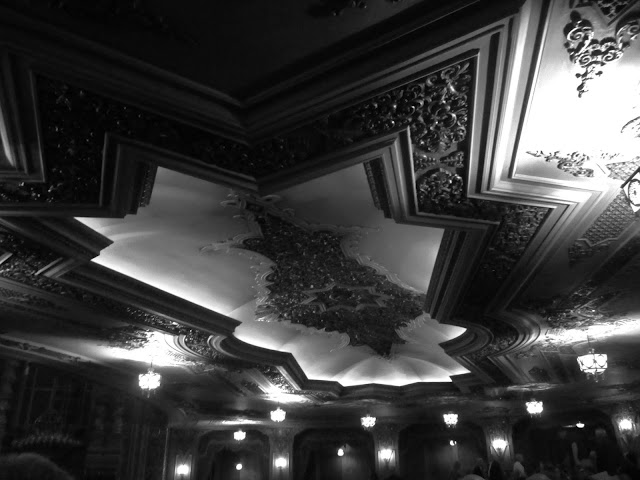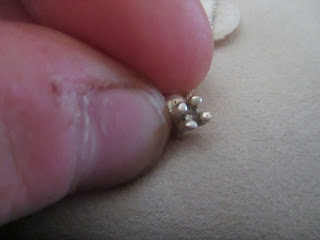If you've seen previous postings here, you'll have seen some of my casting attempts. Sad to say I've been working on casting metal for approximately two or three years and only recently have I had any substantial success. I wear a silver ring on my right hand I made a number of years ago. It was one of my first really good castings. The model was a wooden year I'd made and posted on this blog (you can see some below or on previous pages). The ring cracked and I wanted a more substantial replacement. So I used Delft clay to cast the piece after watching some
videos for it on YouTube. This gentleman was absolutely crucial in my completion of my ring.
Other than sand casting as Delft clay casting is (despite the name), there is a process called lost wax casting. LWC is ancient. The earliest archaeological finds of this process are around 5700 years old from the region known as Palestine/Israel. The idea is simple enough. Take a wax such as beeswax, carve or mold it into the shape you want, attach some wax channels, cover in clay or similar material, burn the wax out, pour in liquid metal. Although that sounds easy enough, the process is quite laborious and time consuming. I've been trying to cast with this method for two years but with little to show for it. The closest I came to a success is documented on this blog further back in time.
Nowadays, LWC is done with a variety or different kinds of waxes. Just like Inspector Clouseau said "Wax is not just wax." I've used a form or wax commonly known as jeweler's wax or jewelry wax. It is blue, hard, and contains amounts of plastic to make it harder. Some wax compositions are hard enough to be put onto lathes or CNC machines. I prefer beeswax though. The easy of modeling and melting of this wax means it is very simple to reuse. To carve, one needs sharp tools and perhaps a freeze nearby. The freezer helps keep the wax cool and hard after handling in your warm hands.
I'd recently done some of this work to make a solitaire style ring. I had set my sights on jewel setting a long time ago, but now I could finally see a representation of what I was going to do. I took about two or three days making the model. Then the model sat in the freezer overnight and was set into plaster of Paris. I use DAP professional quality style plaster you can get at the hardware store. The reason is availability and pricing mostly, but the composition of it is different from others, containing calcium carbonate and crushed silica. This increases strength and heat resistance.
After making the mold, I had to wait for a new crucible to come, but as soon as it came, I fired up the forge. I set the mold in there to burn it out. After it stopped smoking, I grabbed it with tongs I'd modified to hold the crucible. I held it upside down over the quench bucket to see if any wax would pour out, but SPLASH! I dropped the mold I'd been waiting a week to cast into my quench bucket. Plaster is water resistant, but when it reaches 392 degrees Fahrenheit it will revert back to the form before water was added. Needless to say I was mad. Thankfully when I threw the tongs, they missed the car.
Round two of ring making went better, but I stupidly sprued the model incorrectly so I ended up with this.
A complete disaster. The silver was cold, spruing led to air pockets, and the casting was porous. Not to be defeated I tried again. This time I went for a single stone pendant idea I'd had on the back burner. I sprued it up and set about putting three plaster coats as well as wire reinforcement.
I used a new set of tongs better suited to picking this up, set it in the forge, and watched it burn. Placing the mold in sand, I set about melting the silver, this time running the forge extra hot. I poured and held my breath. The side sprue erupted with silver out the side. I felt triumphant pouring out the last of the silver, but previous experience had taught me to expect defeat again.
I pulled it out of the sand and left the mold to cool for a few and went inside to share my worries with anyone who'd listen. I then went outside, picked up the mold in my tongs, and quenched it. After the bubbles subsided, I saw that it had worked! I had a casting from LWC method for the first time!
After cleaning it looked like this.
I then set about getting it ready for a jewel. After ordering a chain, I looked to see if I could set some grooves in the tines to make them more like
this video. Files wouldn't work so I had to check through my Dremel tools. Unfortunately, I had no such tool. So, I made one.
Then I made the grooves.
The chain comes Friday so I'll drill the whole when it arrives. The hard part now is to get a gem for this. For economic reasons, I can't just get one this size so I'll have to get something on the order of twenty. I just don't know what color or type of stone to get since I'll be using them for the rest of the project with stones. I'll see if I can do an update soon with the finished project.























































